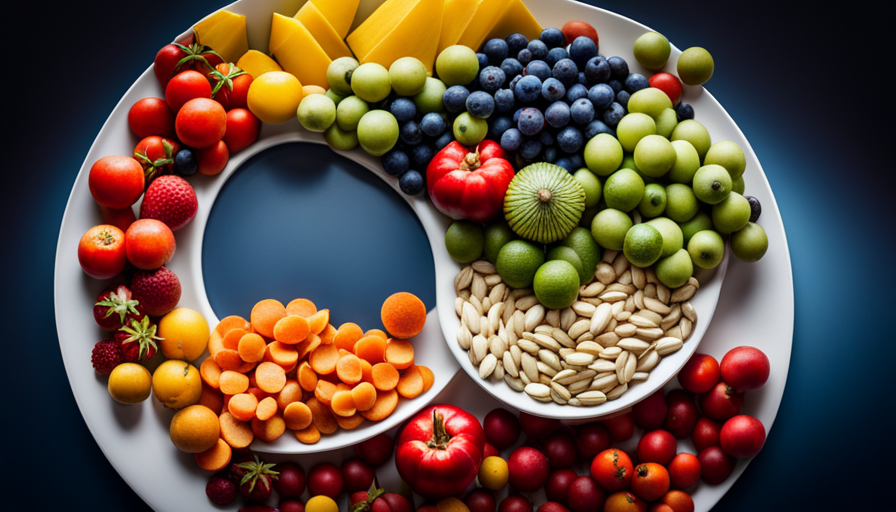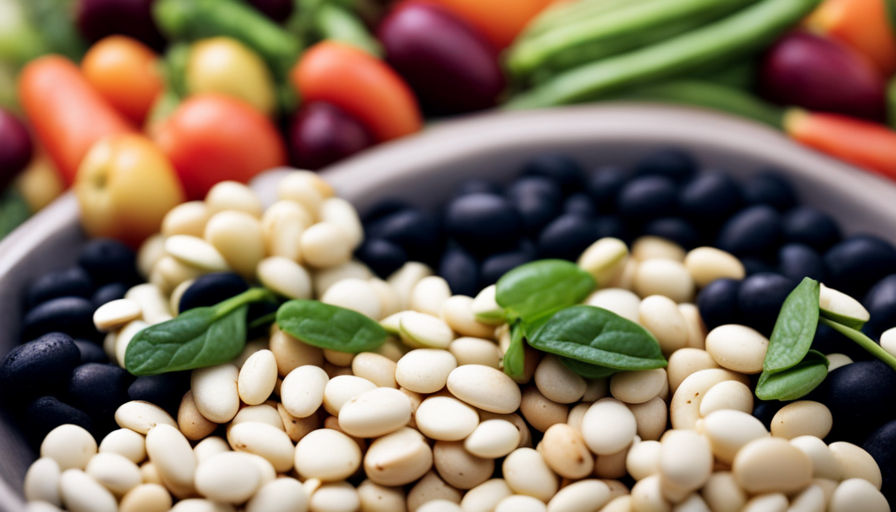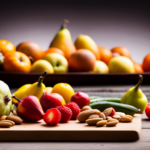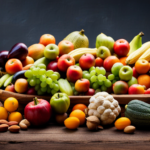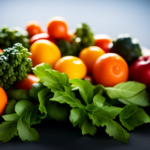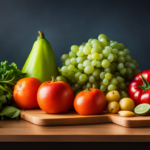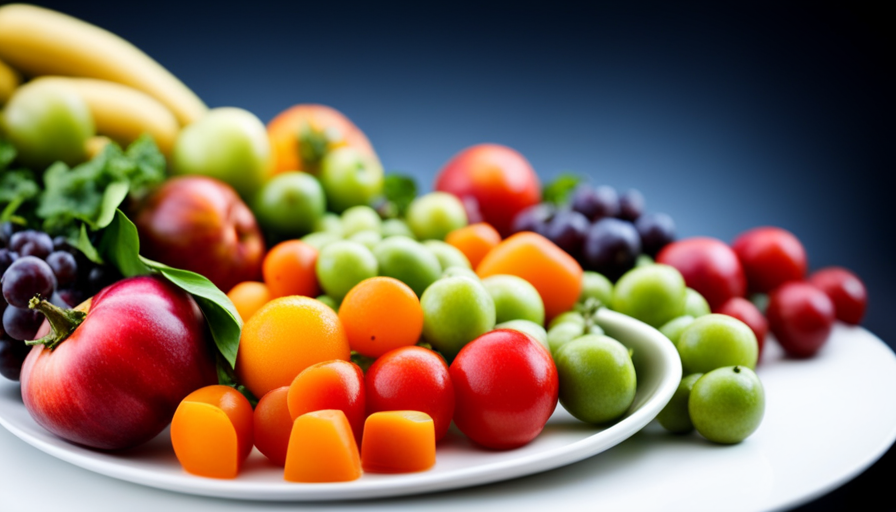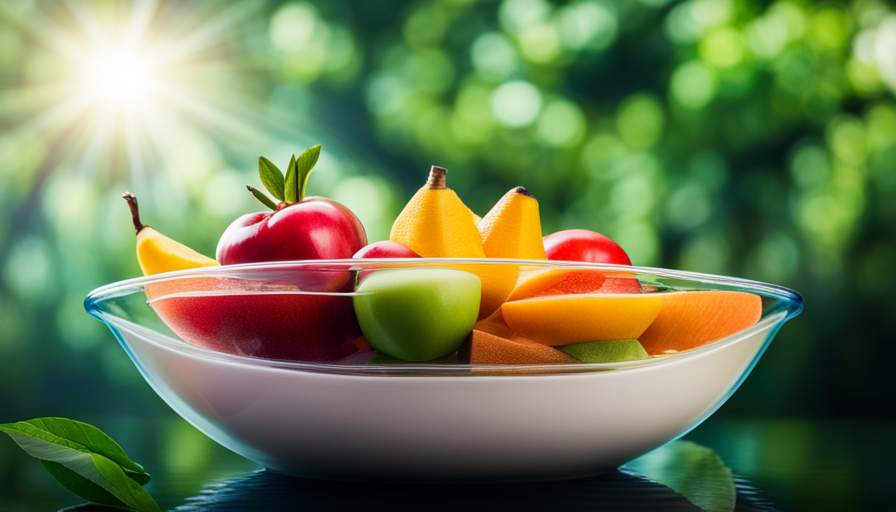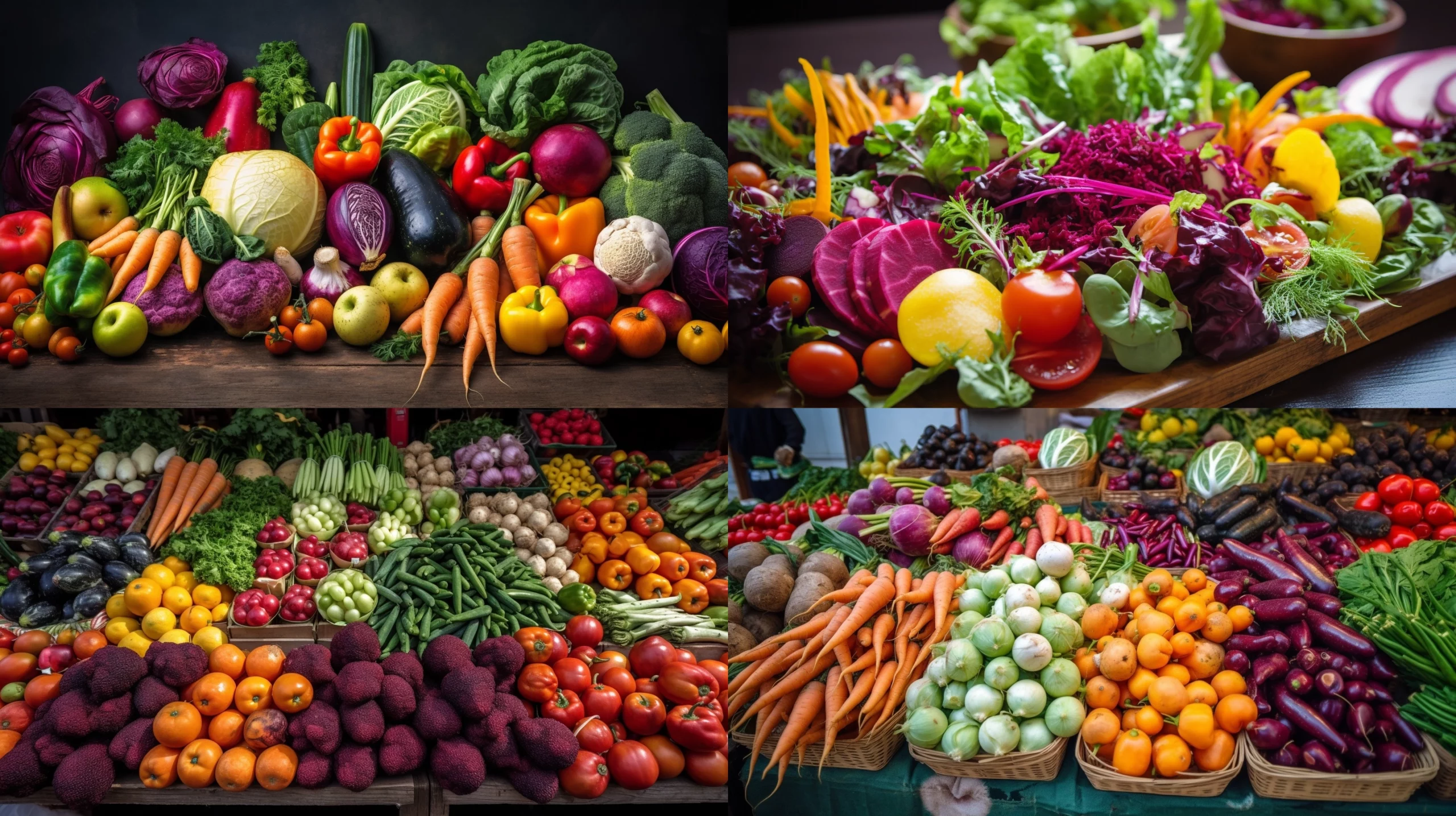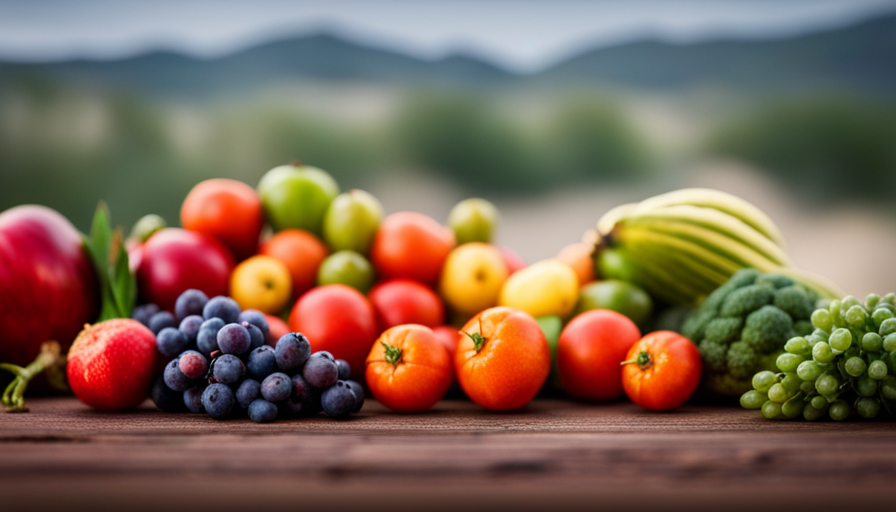Are you prepared to elevate your health to the next level?
Are you tired of feeling sluggish and weighed down by processed foods?
Well, have no fear because the raw food diet is here to revolutionize your eating habits!
This incredible and life-changing diet takes the concept of healthy eating to a whole new level.
Imagine a world where every bite you take is bursting with nutrients, enzymes, and vitality.
With the raw food diet, you can experience just that.
By consuming unprocessed, uncooked, and primarily plant-based foods, you can unlock a whole new level of wellness.
In this article, we will guide you through the ins and outs of a raw food diet, from understanding the basics to incorporating fruits and vegetables into your daily meals.
Get ready to nourish your body like never before and embark on a journey towards optimal health and vitality!
Key Takeaways
- Transition to a raw food diet gradually and consult with a healthcare professional before starting.
- Incorporate an abundance of fresh fruits and vegetables in your meals.
- Use essential tools like a high-speed blender, food processor, spiralizer, dehydrator, and nut milk bag.
- Pay attention to your body’s needs, practice intuitive eating, and adjust your diet based on how different foods make you feel.
Understanding the Basics of a Raw Food Diet
Now, let’s dive into the exciting world of raw food diets and discover how you can easily incorporate this healthy lifestyle into your daily routine!
Understanding the basics of a raw food diet is essential before embarking on this journey. The principles of a raw food diet are simple – it involves consuming mostly uncooked and unprocessed plant-based foods. By eating raw fruits, vegetables, nuts, seeds, and sprouted grains, you can reap the benefits of their natural enzymes, vitamins, and minerals.
However, there are some common misconceptions about raw food diets that need to be addressed. One misconception is that all raw food diets are vegan. While many raw food enthusiasts do follow a vegan lifestyle, it’s possible to include raw animal products like raw dairy or raw fish in your diet, if that aligns with your personal beliefs and goals.
Another misconception is that a raw food diet lacks protein. Contrary to popular belief, there are plenty of plant-based sources of protein available on a raw food diet, such as nuts, seeds, leafy greens, and legumes.
By understanding the principles of a raw food diet and debunking common misconceptions, you can confidently embark on your journey towards a healthier lifestyle. Remember to always listen to your body and consult with a healthcare professional before making any drastic changes to your diet.
Benefits of a Raw Food Diet
Furthermore, embracing a raw food lifestyle can lead to a plethora of amazing health rewards. One of the major benefits of a raw food diet is its ability to reduce health risks. By consuming unprocessed, whole foods in their natural state, you’re providing your body with essential nutrients, enzymes, and antioxidants that can help protect against chronic diseases such as heart disease, diabetes, and certain types of cancer.
Raw foods are rich in vitamins, minerals, and fiber, which can boost your immune system and improve your overall well-being. Another advantage of a raw food diet is its potential for weight loss. Raw foods are generally low in calories and high in water content, which can help you feel full and satisfied while consuming fewer calories. Additionally, raw foods are typically packed with fiber, which aids in digestion and promotes a healthy metabolism. This can lead to natural and sustainable weight loss over time.
It’s important to note that while a raw food diet can offer numerous health benefits, it may not be suitable for everyone. Some individuals, such as pregnant women, children, and people with certain medical conditions, may need to modify the diet to ensure they meet their nutritional needs. Consulting with a healthcare professional or registered dietitian is recommended before starting any new diet plan.
Transitioning to a Raw Food Diet
Transitioning to a raw food lifestyle can be an exciting journey filled with delicious and nutritious plant-based meals. To help you make a smooth transition, here are some tips to keep in mind:
-
Start gradually: Instead of jumping into a fully raw diet overnight, ease into it by incorporating more raw foods into your meals gradually. This will give your body time to adjust and make the transition easier.
-
Experiment with recipes: Explore different raw food recipes to find meals that you enjoy. There are plenty of resources available online and in cookbooks that can guide you in creating tasty and satisfying raw meals.
-
Plan your meals: Planning ahead can make the transition easier. Make a weekly meal plan and prepare your ingredients in advance. This will help you stay on track and avoid resorting to unhealthy options when you’re short on time.
-
Stay hydrated: Raw foods are naturally hydrating, but it’s still important to drink plenty of water throughout the day. Aim for at least eight glasses of water to keep your body properly hydrated.
-
Common challenges: It’s normal to face challenges when transitioning to a raw food diet. Some common ones include cravings for cooked foods, social situations, and finding raw options when dining out. Remember to be patient with yourself and seek support from online communities or local groups who share the same lifestyle.
Transitioning to a raw food diet may take time, but with these tips and a positive mindset, you can successfully make the switch and enjoy the health benefits that come with it.
Essential Tools and Equipment for a Raw Food Diet
To fully embrace the vibrant world of raw cuisine, you’ll need a plethora of indispensable tools and equipment that will leave your kitchen overflowing with culinary possibilities. When it comes to a raw food diet, having the right tools can make all the difference in your food preparation. Here are some essential tools and food preparation equipment that will help you on your raw food journey:
| Tool/Equipment | Description | Benefits |
|---|---|---|
| High-speed blender | Perfect for making smoothies and sauces | Creates silky smooth textures |
| Food processor | Great for chopping, pureeing, and mixing | Speeds up food preparation |
| Spiralizer | Transforms veggies into noodle-like shapes | Adds variety to your dishes |
| Dehydrator | Used to dry fruits, vegetables, and nuts | Preserves nutrients and enhances flavors |
| Nut milk bag | Essential for straining homemade nut milk | Produces smooth and creamy plant-based milk |
These tools and equipment will help you create a wide range of delicious raw meals. Whether you’re making a refreshing green smoothie, a zucchini pasta dish, or dehydrating some flavorful kale chips, having these essential tools will make the process easier and more enjoyable. So, stock up your kitchen with these must-have items and get ready to explore the endless possibilities of raw food cuisine.
Incorporating Fruits and Vegetables into Your Raw Food Diet
When it comes to embracing a raw lifestyle, you’ll discover a world of vibrant flavors and endless possibilities by incorporating an abundance of fresh fruits and vegetables into your daily meals. Not only are fruits and vegetables packed with essential vitamins, minerals, and fiber, but they also add a burst of color and freshness to your plate.
To help you get started, here are some creative meal ideas and seasonal produce options to incorporate into your raw food diet.
One creative meal idea is to make a colorful and refreshing fruit salad. Mix together a variety of your favorite fruits such as berries, melons, and tropical fruits like mangoes and pineapples. For added flavor, you can squeeze some lime or lemon juice over the top.
Another idea is to create a vibrant vegetable wrap. Use crisp lettuce leaves or collard greens as your wrap, and fill it with an assortment of raw vegetables such as sliced bell peppers, cucumbers, carrots, and avocado. You can also add some sprouts or fresh herbs for extra flavor.
When it comes to seasonal produce options, take advantage of what’s available during each season. In the spring, enjoy fresh greens like spinach and asparagus. During the summer, indulge in juicy tomatoes, sweet corn, and refreshing watermelon. Fall brings an abundance of root vegetables like beets and sweet potatoes, while winter offers hearty options like kale and citrus fruits.
Incorporating fruits and vegetables into your raw food diet not only adds variety and taste to your meals but also provides you with a wide range of nutrients to support your overall health and well-being. So get creative, explore new flavors, and enjoy the benefits of a raw food diet.
Exploring Raw Food Recipes
Discover a world of delicious possibilities as you explore raw food recipes, with options ranging from refreshing smoothie bowls to nutrient-packed raw veggie sushi rolls. Did you know that a study found that incorporating more raw plant-based meals into your diet can lead to improved digestion and increased energy levels? By incorporating gourmet raw food dishes into your repertoire, you can elevate your raw food diet to a whole new level.
One exciting aspect of exploring raw food recipes is discovering gourmet raw food dishes. These dishes aren’t just visually appealing but also bursting with flavor. From zucchini noodles with avocado pesto to raw lasagna with cashew cheese, these gourmet recipes will impress even the most discerning palate. By experimenting with different ingredients and flavor combinations, you can create unique and satisfying meals that’ll keep you excited about your raw food diet.
Another delightful aspect of raw food recipes is discovering raw food desserts. Contrary to popular belief, you can still enjoy sweet treats while following a raw food diet. Raw desserts like raw chocolate mousse, raspberry cheesecake, and lemon coconut bliss balls aren’t just healthy but also incredibly indulgent. These desserts often incorporate nuts, seeds, and fruits, providing you with essential nutrients while satisfying your sweet tooth.
Exploring raw food recipes opens up a world of possibilities for creating delicious meals and desserts. By incorporating gourmet raw food dishes and discovering raw food desserts, you can enjoy a varied and satisfying raw food diet. So why not start experimenting with raw food recipes and indulge in the incredible flavors and health benefits they offer?
Ensuring Proper Nutrition on a Raw Food Diet
Now that you’ve explored some delicious raw food recipes, let’s move on to the next step in your raw food journey: ensuring proper nutrition.
Following a raw food diet can provide numerous health benefits, but it’s important to make sure you’re getting all the essential nutrients your body needs.
First and foremost, proper hydration is key. Drinking an adequate amount of water is crucial for maintaining optimal health on any diet, including a raw food one. Aim to drink at least 8 glasses of water per day to stay hydrated and support your body’s functions.
Next, managing cravings is a common challenge when transitioning to a raw food diet. To combat this, try incorporating a variety of fruits and vegetables into your meals to satisfy your taste buds. Additionally, including healthy fats like avocados, nuts, and seeds can help curb cravings and provide satiety.
To ensure you’re getting all the necessary nutrients, consider taking supplements such as vitamin B12, omega-3 fatty acids, and vitamin D. These nutrients are commonly found in animal-based products, so supplementing can help prevent deficiencies.
Remember, maintaining proper hydration and managing cravings are essential aspects of a successful raw food diet. By following these tips, you can ensure that you’re nourishing your body and enjoying the benefits of a raw food lifestyle.
Overcoming Challenges and Staying Motivated on a Raw Food Diet
To stay motivated on your raw food journey, envision yourself thriving with vibrant energy and glowing health as you embrace the challenges and triumph over them. One common challenge on a raw food diet is overcoming cravings for cooked or processed foods. These cravings can be intense, especially in the beginning, but they will diminish over time as your body adjusts to the new way of eating. One strategy to overcome cravings is to focus on the benefits of a raw food diet. Remind yourself of the increased energy, improved digestion, and potential weight loss that can come from eating raw, nutrient-dense foods.
Another important aspect of staying motivated is finding support. Surrounding yourself with like-minded individuals who are also on a raw food diet can provide encouragement and accountability. Look for local raw food meetups or online communities where you can connect with others who understand the challenges and can offer advice and support. Additionally, consider seeking guidance from a raw food coach or nutritionist who can provide personalized guidance and help you navigate any obstacles you may encounter. Remember, staying motivated on a raw food diet is a continuous journey, but with the right mindset and support, you can overcome challenges and achieve vibrant health.
| Overcoming Cravings | Finding Support |
|---|---|
| Remind yourself of the benefits of raw food diet | Join local raw food meetups |
| Focus on the increased energy and improved digestion | Connect with online raw food communities |
| Seek guidance from a raw food coach or nutritionist | Surround yourself with like-minded individuals |
Listening to Your Body’s Needs on a Raw Food Diet
Embrace the intuitive wisdom of your body and tune in to its unique needs as you navigate your raw food journey. Your body’s signals are constantly being sent to you, and learning to listen to them is crucial for a successful raw food diet. Here are some tips to help you practice intuitive eating:
-
Pay attention to hunger and fullness cues: Listen to your body’s signals of hunger and fullness. Eat when you’re hungry and stop when you’re satisfied. Trust that your body knows when it needs nourishment.
-
Notice how different foods make you feel: As you experiment with different raw foods, pay attention to how they make you feel. Do certain foods give you energy and make you feel vibrant? Are there foods that leave you feeling sluggish or bloated? Your body’s reactions can guide you towards the foods that best suit you.
-
Cravings may have meaning: Cravings can often indicate specific nutrient deficiencies. If you find yourself craving a certain food, it might be worth exploring whether your body is trying to tell you something. Consult with a nutritionist or do some research to understand what your body might be lacking.
-
Trust your body’s wisdom: Your body’s wisdom is something to be trusted. It is a remarkable machine that knows what it needs. Remember that everyone’s body is unique, so what works for someone else may not work for you.
By listening to your body’s needs and practicing intuitive eating, you can optimize your raw food diet and find a way of eating that supports your overall well-being. Enjoy the journey!
Creating a Balanced and Sustainable Raw Food Lifestyle
Discover the key to maintaining a nourishing and long-lasting raw food lifestyle that supports your body’s needs and keeps you feeling vibrant and energized. Creating a sustainable raw food lifestyle involves finding support and implementing strategies that work for you. Here are some practical tips to help you on your journey:
- Balance your nutrients: A balanced raw food diet includes a variety of fruits, vegetables, nuts, and seeds. Use the table below to ensure you’re getting a good mix of essential nutrients:
| Nutrient | Sources |
|---|---|
| Protein | Almonds, hemp seeds, spirulina |
| Calcium | Kale, broccoli, sesame seeds |
| Iron | Spinach, lentils, chia seeds |
| Vitamin C | Oranges, strawberries, bell peppers |
-
Meal planning: Plan your meals in advance to ensure you have a variety of raw food options available. This will help you stay on track and avoid reaching for unhealthy processed foods.
-
Find support: Connect with others who are also following a raw food lifestyle. Join online communities, attend local events, or find a raw food coach who can provide guidance and motivation.
-
Listen to your body: Pay attention to how your body responds to different foods. Experiment with different raw food recipes and adjust your diet accordingly.
By following these tips and finding the support you need, you can create a balanced and sustainable raw food lifestyle that nourishes your body and supports your overall well-being.
Frequently Asked Questions
Can I eat cooked food occasionally while on a raw food diet?
Yes, you can occasionally eat cooked food while on a raw food diet. It’s important to find cooked food alternatives that are still healthy and nutritious. While raw food diets have many benefits, such as increased nutrient intake and improved digestion, occasionally incorporating cooked food can offer variety and flexibility. Just ensure that the majority of your diet consists of raw fruits, vegetables, nuts, and seeds to maximize the benefits of a raw food diet.
Are there any specific vitamins or supplements I should take while on a raw food diet?
To ensure you meet your nutrient needs on a raw food diet, it’s important to be mindful of potential vitamin deficiencies. Since raw foods aren’t cooked, some vitamins may be less bioavailable. Consider supplementing with vitamins B12, D, and iron, as these are commonly lacking in a raw food diet.
Additionally, focusing on nutrient-dense foods like leafy greens, nuts, and seeds can help maximize nutrient absorption. Consulting with a healthcare professional or registered dietitian is also recommended for personalized guidance.
How can I ensure I am getting enough protein on a raw food diet?
Making sure you’re getting enough protein on a raw food diet can be a challenge, but don’t worry, protein sources do exist beyond a juicy steak. Think nuts, seeds, and legumes! These little powerhouses pack a punch when it comes to protein. Almonds, chia seeds, and lentils are just a few examples of the many options available. Incorporating a variety of these protein-packed foods into your meals will ensure you’re meeting your protein needs while living that raw food life.
Can I still eat out at restaurants while following a raw food diet?
Yes, you can still eat out at restaurants while following a raw food diet. There are actually many eating out options available for those on a raw food diet.
However, it can be challenging to find restaurants that offer raw food options. To overcome this challenge, research local restaurants beforehand and look for ones that have raw food options on their menu. Additionally, you can communicate with the restaurant staff to see if they can accommodate your raw food needs.
Is it necessary to purchase organic produce for a raw food diet?
Did you know that studies have shown that organic produce contains higher levels of nutrients and antioxidants compared to conventionally grown produce? This means that choosing organic for your raw food diet can provide even more benefits for your overall health.
However, if purchasing organic produce is not within your budget, there are cost-effective alternatives. You can prioritize buying organic for the ‘Dirty Dozen’ list of fruits and vegetables that are most heavily sprayed with pesticides, and opt for conventionally grown produce for the ‘Clean Fifteen’ list.
Can You Provide Step-by-Step Instructions on Starting a Raw Food Diet?
Sure! When starting a raw food diet, it’s important to ease into it. Begin by gradually incorporating more raw fruits, vegetables, nuts, and seeds into your meals. Experiment with different recipes and meal plans to keep it interesting. Check out online resources for raw food diet tips and tricks to help you along the way.
Conclusion
In conclusion, adopting a raw food diet can offer numerous benefits for your health and well-being. By consuming unprocessed, nutrient-dense foods, you can increase your energy levels, improve digestion, and even promote weight loss.
Transitioning to a raw food diet may require some adjustments, but with the right tools and equipment, incorporating fruits and vegetables into your meals will become second nature. Remember to listen to your body’s needs and ensure proper nutrition.
For instance, Sarah, a 42-year-old woman, experienced significant improvements in her skin complexion and digestion after adopting a raw food diet. With determination and the right mindset, you can create a balanced and sustainable raw food lifestyle that will positively impact your overall health.

